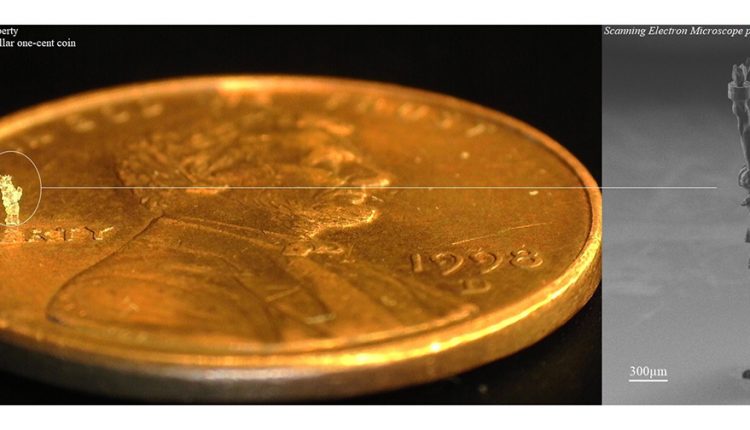New 3DMicroprinting Feature Prints Tiniest Statue Of Liberty
Microlight3D has announced a new 3D microprinting feature that breaks through the height limitation of micron-sized structures, while maintaining micrometric resolution. To demonstrate its new Long-range Z feature, Microlight3D printed the world’s tiniest Statue of Liberty, a replica measuring 1.8mm high by 0.6mm wide, in commemoration of Inauguration Day.
With Long-range Z, Microlight3D customers will be able to 3D fabricate minute structures up to 10mm high. Previously, the height of objects was limited to 0.3mm.
Breaking this height limitation means that Microlight3D has addressed the demands of researchers and industrial developers working on applications in mechanical micro-parts, meta-materials, medical devices etc. who need to make objects a few millimeters high.
“Users will also be able to make alignments on a pre-existing pattern and print exactly where they want. We had great fun positioning the replica of the statue on the word ‘Liberty’ on a United States one-cent coin,” said Philippe Paliard, Co-founder of Microlight3D. “Researchers and industrial developers are looking to work on metallic or silicon wafers.
“Our enhanced 3Dmicroprinting system, compatible with a wide range of materials and substrates, will allow them to micro-fabricate structures they couldn’t before; they will marvel at the ability of our µFAB3D-Advanced 3D-microprinter to align the laser and print on the tip of optical fibers for micro-optics applications.”
Microlight3D printed the statue directly onto the coin to demonstrate that its technology is compatible with very different printing substrates, notably metallic and opaque substrates.
The actual statue was made with OrmoGreen, a polymer doped with silica nanoparticles – the main component of glass. OrmoGreen, developed by Microlight3D, gives material glass-like properties such as rigidity and high chemical and thermal resistance. This polymer has shown to be ideal for making taller structures with micrometric resolution.
Users can produce mechanical micro-parts and meta-materials enabling new features in terms of rigidity, elasticity, lightness and reaction to stress. They include medical devices, such as stents and micro-needles for transdermal injection, as well as micro-optics used as lenses on optical fibers, connectors and innovative micro-endoscopes, among others.

